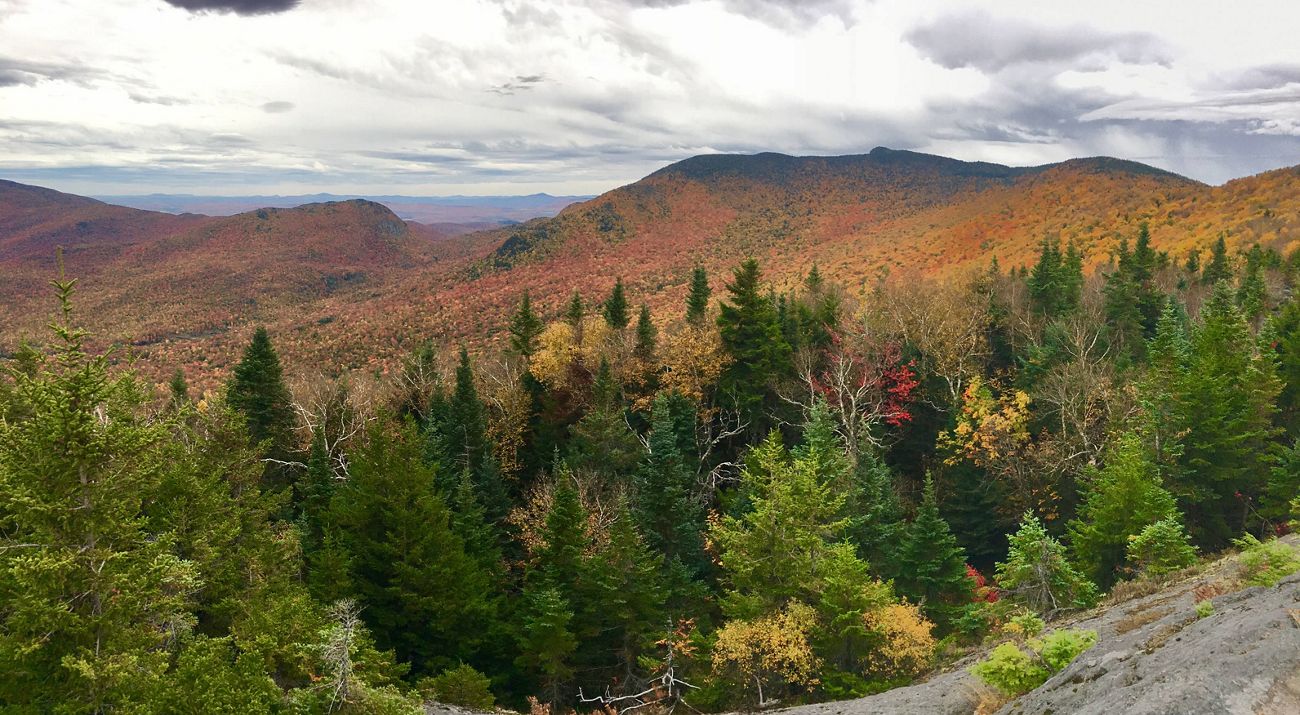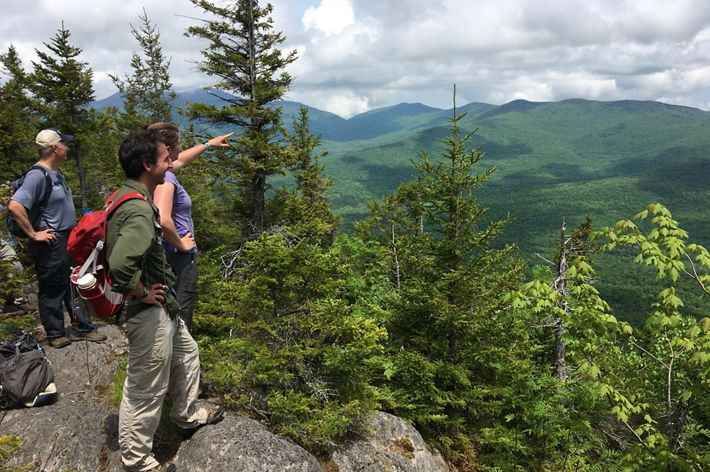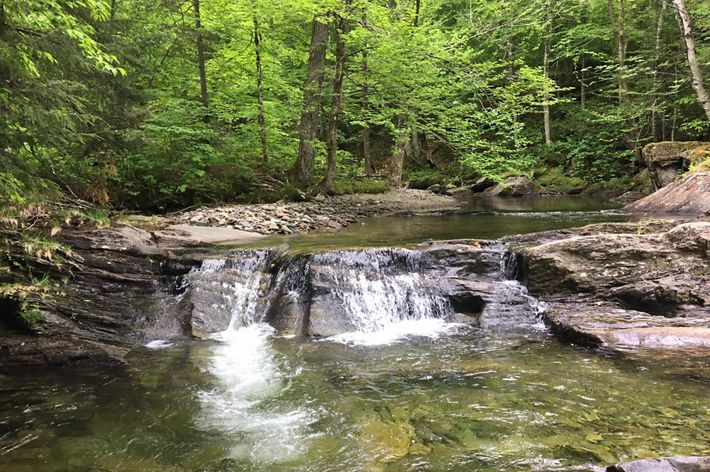Burnt Mountain Beauty
Explore Vermont's newest preserve and the state's largest carbon project.
On a hot, humid day this summer, staff donned their hiking shoes and began the 1,200-foot ascent to the top of Burnt Mountain—The Nature Conservancy’s newest acquisition in the Northeast Kingdom. The nearly 5,500-acre spans the five towns of Belvidere, Eden, Lowell, Montgomery, and Westfield, and is now the largest natural area in our 55-preserve network.
Colleagues wiped sweat from their brows as they listened for bird song on their climb, identifying 25 different species over a range of habitat from which sprung wildflower delights: painted trillium, bluebead lily, and blue cohosh.
Arriving at the top, the team was welcomed by the call of the black pole warbler, a robust pile of moose scat, and an inspiring view of uninterrupted forest that will remain unchanged for future generations due to the hard work of staff, supporters, and partners.
Burnt Mountain will be protected into the future by a “forever wild” easement. Located near state parks, privately owned and conserved lands, and the Long Trail state forest, this conservation project helps create an 11,000-acre block of unfragmented forest that will remain protected in perpetuity for future generations.
Quote
Burnt Mountain will become Vermont’s largest carbon project in the state.
It may be surprising to learn that protected wildlands such as Burnt Mountain are special and rare. Wildlands make up only 3.2% of all of Vermont’s forests. Intact and healthy forests clean our air, remove pollutants, improve water quality, and slow the place of climate change by storing carbon. And now we are going to work to bring the benefits of those trees to the market.
Burnt Mountain will become Vermont’s largest carbon project in the state. Early estimates suggest that the parcel will yield more than 236,772 credits in the first decade (1 credit = 1 metric ton of carbon), an equivalent benefit of removing 38,000 cars from the road.
The carbon storage project is also anticipated to generate $2 million in revenue over ten years. As conservation funding contracts and the impacts of climate change increase, we are pushing ourselves to think innovatively about how to scale our environmental defenses to build a future where both people and nature can thrive. Therefore, not only will we be managing this newest natural area for biodiversity, wildlife habitat, and recreation but for carbon as well.
As staff took in the views their pride was palpable. The cumulative efforts of so many secured this landscape, ensuring that it will remain unchanged for all who come after and that wild nature and all of its benefits will live on in Vermont.


